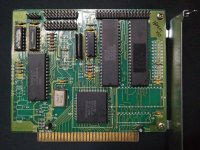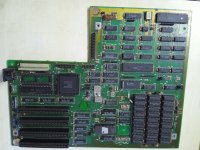ayandon
Experienced Member
Hello,
This is my MFM Hard-disk Controller 8-Bit ISA Card.
May be its CXT-101.
It was in running condition when used years ago. (This is not a scrap-card)
Now, when testing, I only noticed that there is a short on +5v line!
Can you pls help me to identify the Capacitors and those few ICs with no markings on it?
It will be a great help.
Also, pls share your pics if you have similar card.
This is my MFM Hard-disk Controller 8-Bit ISA Card.
May be its CXT-101.
It was in running condition when used years ago. (This is not a scrap-card)
Now, when testing, I only noticed that there is a short on +5v line!
Can you pls help me to identify the Capacitors and those few ICs with no markings on it?
It will be a great help.
Also, pls share your pics if you have similar card.


